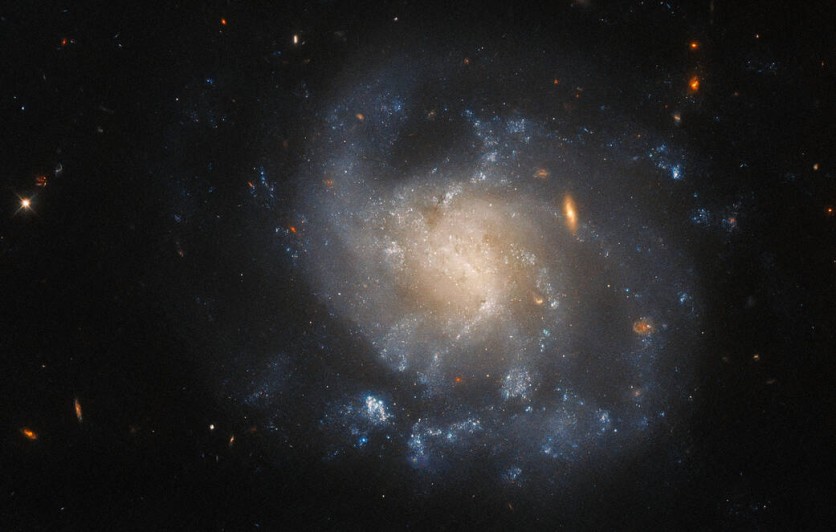The NASA/ESA Hubble Space Telescope has captured a breathtaking image of IC 1776, a barred spiral galaxy located 150 million light-years from Earth in the constellation Pisces that is believed to have recently experienced a supernova.

Supernova: A Host to a Dramatic and Cataclysmic Event
The galaxy IC 1776 recently played host to a dramatic and explosive event - a supernova. Discovered in 2015 by the vigilant Lick Observatory Supernova Search, a global network of automated robotic telescopes, this event marked a transient, albeit powerful, moment in the cosmos.
These robotic telescopes, which are run by a collaboration of professional and amateur astronomers, monitor the skies for short-lived astronomical occurrences, including supernovae, wandering asteroids, and gravitational microlensing.
While the supernova, dubbed SN 2015ap, is not visible in this particular image, the Hubble Space Telescope turned its gaze towards the aftermath of this cosmic explosion.
Through two separate observational endeavors, Hubble sought to dissect the remnants left behind by the supernova. This investigative effort aims to deepen our comprehension of the intricate processes underlying these energetic phenomena.
IC 1776 is a spiral galaxy exhibiting an irregular shape with spiral arms that are somewhat challenging to delineate. The galaxy's periphery is subtly defined, while its core emits a gentle, golden radiance.
Throughout the galaxy, the faint, wispy, and azure regions mark the birthplaces of new stars. Several stars and diminutive galaxies are scattered across the scene, adding a warm palette of colors to the tableau.
NASA/ESA Hubble Space Telescope Captures Splendid Isolation of Supernova
In its splendid isolation, IC 1776 offers a glimpse into the vast, enigmatic tapestry of the universe. The dance of galaxies, the fiery birth of stars, and the explosive demise of supernovae are all threads woven into the cosmic fabric, painting a portrait of the ceaseless dynamism that characterizes our universe.
This captivating image serves as a testament to the tireless efforts of astronomers and the capabilities of the Hubble Space Telescope to provide us with windows into realms far beyond our terrestrial confines.
In related news, NASA's James Webb Space Telescope recently explored one of the most celebrated supernovae, SN 1987A (Supernova 1987A). Situated 168,000 light-years away in the Large Magellanic Cloud, SN 1987A has captivated scientists for nearly four decades.
Since its discovery in February 1987, it has been subjected to extensive observations across a broad spectrum, from gamma rays to radio waves. New observations by Webb's NIRCam (Near-Infrared Camera) are shedding light on the development of this supernova and its remnant.
Learn more about this iconic supernova by clicking on this story.
Related Article : NASA's Hubble Space Telescope Captures 'Butterfly Nebula' In Stunning Motion | Fun Facts About This Beautiful Space Butterfly

ⓒ 2025 TECHTIMES.com All rights reserved. Do not reproduce without permission.

![Best iPads that Students Can Use in School [2025]](https://d.techtimes.com/en/full/461431/best-ipads-that-students-can-use-school-2025.jpg?w=184&h=103&f=516289300e12e9647ef3d5bd69f49b70)


